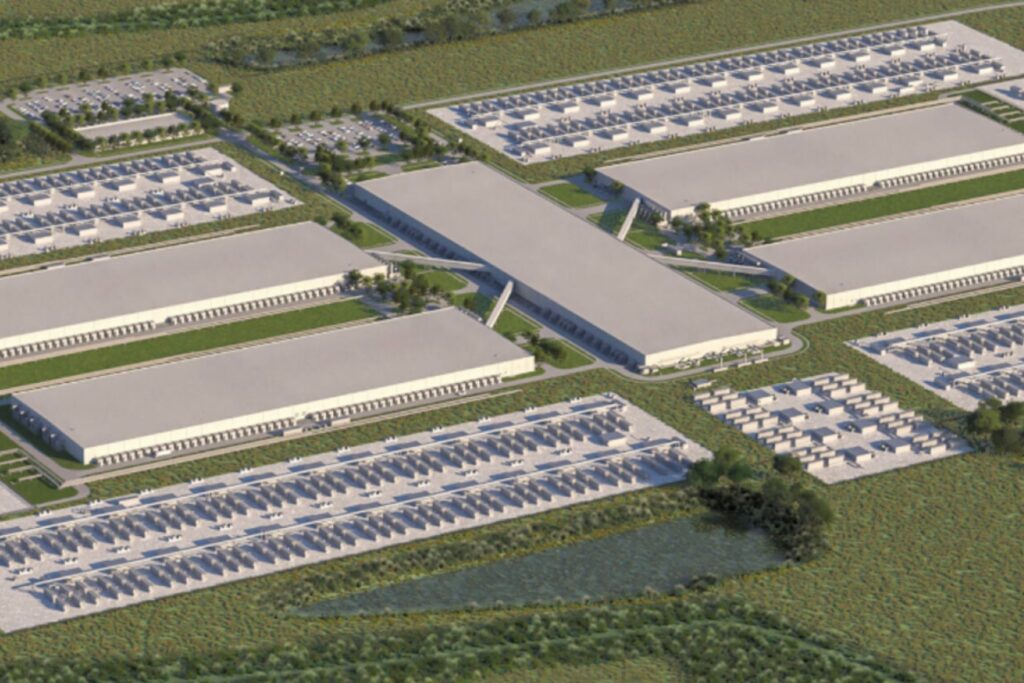Mark Zuckerberg isn’t just talking about the future of artificial intelligence. He’s constructing it on an unprecedented scale. Meta has announced plans for a revolutionary AI data center that will span the equivalent size of Manhattan, marking one of the most ambitious infrastructure projects in tech history.
This massive facility represents Meta’s bold bet on wearable computing and AI-powered smart glasses, which the company believes will eventually replace smartphones as our primary computing interface.
The Scale of Meta’s Vision

While specific location details remain under wraps, early reports indicate this facility will rank among the largest private data centers ever constructed. The sheer scale speaks to Meta’s confidence in the wearable computing revolution.
The data center is specifically engineered to handle the computational demands of real-time AI processing, including large language models and computer vision algorithms that will power Meta’s next-generation wearable devices.
Powering the Smart Glasses Revolution
This announcement follows closely on the heels of Meta’s enhanced Ray-Ban smart glasses, which feature advanced AI capabilities including image recognition, real-time translation, navigation assistance, and contextual coaching.
The new data center will serve as the computational backbone for these devices, enabling:
Real-Time Processing: Instantaneous AI responses for wearable interactions without noticeable delays
Advanced Computer Vision: Complex image and scene analysis to understand user environments
Contextual Intelligence: AI that adapts to user behaviors and preferences over time
Seamless Integration: Smooth operation across Meta’s expanding ecosystem of AI products
Supporting Meta’s AI Ecosystem
Beyond smart glasses, this infrastructure investment will bolster Meta’s broader artificial intelligence initiatives, including their LLaMA language models and future AI assistants designed for ambient computing experiences.
The facility is designed to process trillions of operations per second, supporting Meta’s vision of AI that operates seamlessly in the background of daily life rather than requiring direct interaction with screens and keyboards.
The Competitive Landscape
Meta’s infrastructure push positions the company alongside other tech giants making massive AI investments:
OpenAI’s Cloud Expansion: Focusing on API partnerships and scalable cloud services for enterprise clients
Google’s TPU Development: Advancing custom chips to support Gemini AI and Pixel device intelligence
Apple’s Intelligence Infrastructure: A $4 billion server farm investment supporting on-device AI processing
Meta’s differentiator lies in scale and their specific focus on wearable-first computing experiences.
Ambient Computing: The Next Paradigm Shift
Meta’s investment signals a fundamental shift toward what they call “ambient computing.” This represents technology that operates in the background of daily life, responding to context and need without explicit commands.
The Manhattan-sized data center will enable smart glasses and other wearables to understand environments, anticipate user needs, and provide assistance that feels natural and intuitive rather than intrusive.
Technical Challenges and Solutions
Processing AI for wearable devices presents unique challenges that this facility is designed to address:
Latency Requirements: Wearable AI must respond instantly to feel natural, requiring specialized infrastructure optimization
Power Efficiency: Balancing computational power with energy consumption for sustainable operations
Data Processing Volume: Handling massive amounts of visual and contextual data from millions of users simultaneously
Privacy Protection: Ensuring user data remains secure while enabling personalized AI experiences
Industry and Social Implications
This infrastructure investment raises important questions about the future of human-computer interaction and the role of always-on AI in daily life.
Privacy Considerations: How will Meta handle the vast amounts of personal and environmental data collected by wearable devices?
Environmental Impact: What will be the ecological footprint of such a massive computational facility?
Social Changes: How might constant AI assistance through wearables change human behavior and decision-making?
The Road to Wearable Dominance
Meta’s Reality Labs division has invested billions in AR and VR technology, positioning the company to lead the transition away from smartphone-centric computing toward more natural, wearable interfaces.
The data center represents critical infrastructure for this vision, providing the computational foundation needed to make wearable AI truly useful and responsive in real-world situations.
What This Means for Consumers
For everyday users, Meta’s infrastructure investment could translate into:
Enhanced Experiences: More capable and responsive AI assistants integrated into daily activities
New Interaction Models: Moving beyond touch screens toward voice, gesture, and contextual computing
Seamless Integration: AI that works across devices and platforms without manual synchronization
Personalized Intelligence: Systems that learn and adapt to individual preferences and behaviors over time
Looking Toward the Future
Meta’s Manhattan-sized data center isn’t just about current technology. It’s infrastructure built for computing paradigms that don’t yet exist, positioning the company for whatever comes after smartphones and traditional interfaces.
As wearable technology becomes more sophisticated and AI becomes more contextually aware, this facility will serve as the foundation for experiences we can barely imagine today.
The success of this project could determine whether Meta leads the next major shift in personal computing or remains primarily a social media company adapting to changes driven by others.
The Insider Loop will continue tracking this developing story as construction details and timeline information become available. The implications for technology, society, and daily life could be transformative.


